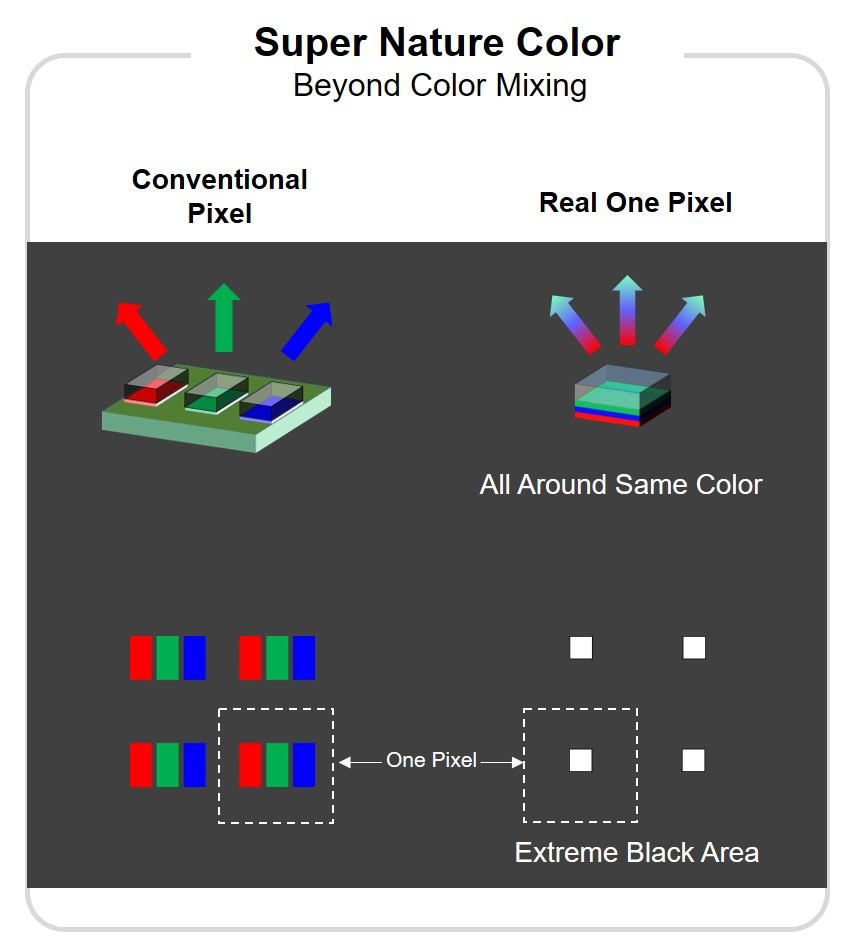News: Optoelectronics
6 September 2022
Seoul Viosys demonstrates micro-LEDs at IFA
At the Internationale Funkausstellung Berlin (IFA 2022) in Germany (2-6 September), ultraviolet LED product maker Seoul Viosys Co Ltd (a subsidiary of South Korean LED maker Seoul Semiconductor Co Ltd) presented micro-LEDs based on a laminated structure – which enables high-resolution displays – as well as its micro-LED display products.
The stacked micro-LED has a unique structure in which three chips representing red, green and blue (R/G/B) are vertically arrayed instead of the usual horizontal array. The main difference from conventional micro-LEDs is that its R/G/B LEDs in the stacked structure emit colors as if they constitute a single pixel through perfect color mixing, it is claimed.
Seoul Viosys says that, due to the stacked structure, its micro-LED can achieve deep black color and a clear image. Also, as colors combining R/G/B are emitted externally from inside a pixel, viewers can see clear pictures without distortions from any direction, it adds.

Picture: Color mixing technique based on Seoul Viosys’s technology.
The stacked micro-LED presented by Seoul Viosys at IFA is based on an innovative future technology that can manufacture 4K display screens between 100- and 200-inches. The company’s booth exhibited two micro-LED displays, including a 54-inch high-resolution 0.625mm-pitch (P0.625) display and an 81.5-inch 0.9375mm-pitch (P0.9375) display.
Various products representing key production processes of Seoul Viosys’s micro-LED, which had not been unveiled publicly, were also on display. By exhibiting epitaxial wafers and other products fabricated using high-level transfer technology for moving micro-LEDs to a display substrate, the firm will offer differentiated prices and quality, it is claimed.
In addition, Seoul Viosys exhibited its display LED techniques supporting its micro-LED technology (such as the molding technique that controls the moiré phenomenon) and highlighted details of the black color, the low-reflection technique that helps achieve vivid colors and high contrast ratios in the light, and the customized free form-factor design cabinet display that allows easy installation and replacement of micro-displays and change to various sizes.
As micro-LEDs must run stably on extremely low power, it is difficult to achieve technical innovation without LED growth technology. Seoul Viosys already owns quantum efficiency enhancement technology for 1㎛-sized micro-LEDs through joint research with Nobel Laureate Shuji Nakamura, a professor at University of California Santa Barbara (UCSB) in the USA. The firm also operates entire processes, from the production of a red-green-blue light-emitting substrate to the manufacturing of devices and modules. Notably, WICOP (Wafer Integrated Chip on PCB), Seoul Viosys’s original technology, was applied to its micro-LED. For producing micro-LEDs, WICOP enables the fabrication of micro-scale chips by using no additional parts such as wires. It also has high reliability due to process simplification.
“By securing WICOP, a source technology for micro-LED and mini-LED, and quantum efficiency enhancement technology, Seoul Viosys is now ready to address any customer requests,” says president Hwang Jeong-hwan. “Seoul Viosys is introducing its products integrated for the purpose of providing a better solution to our customers, comprising LED, molding, and cabinet technologies,” he adds.









